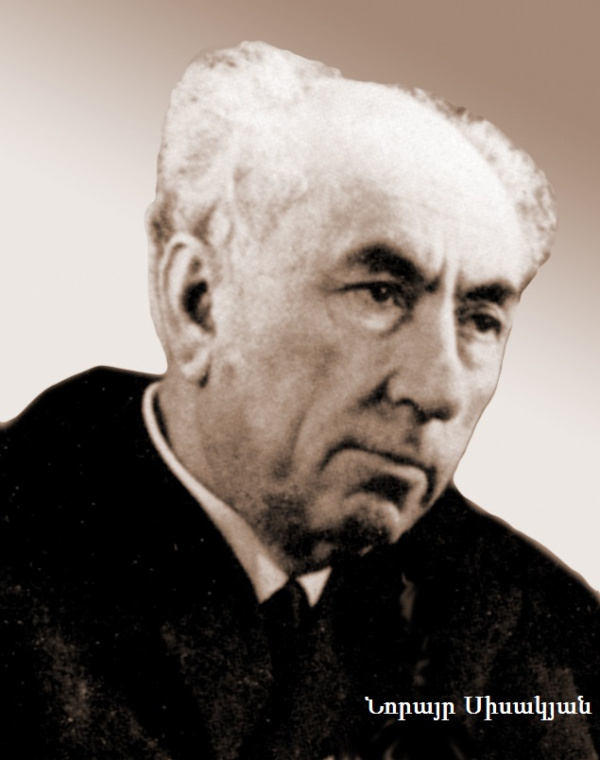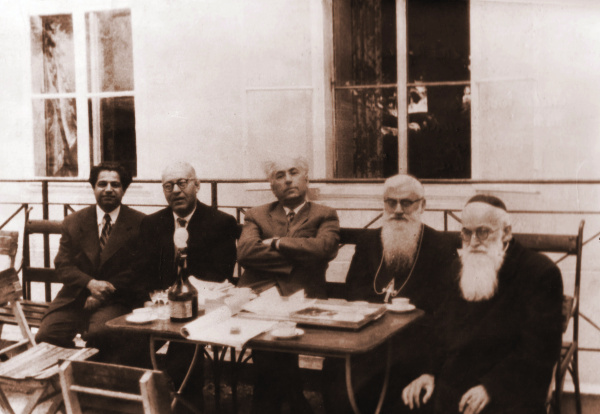
Ph.D., professor, and academician of the Academy of Sciences of the USSR and the Academy of Sciences of the USSR
He was born on January 25, 1907 in Ashtarak. In 1928, Sisakyan was admitted to YSU and was sent to the Moscow Agricultural Academy named after Timiryazev, which was established in 1932. After graduation, he was admitted to postgraduate studies. In 1935, Sisakyan transferred to the Institute of Biochemistry of the Academy of Sciences of the USSR.
In 1936, he defended a candidate's, and in 1940, a doctoral theses. In 1944, he became a professor. In 1960, Sisakyan was elected to the Academy of Sciences of the USSR, and in 1965, academician of the Academy of Sciences of the USSR.
From 1935, he worked at the USSR Academy of Sciences at the Institute of Biochemistry named after A. Bach, from 1946 to 1959; Sisakyan was the deputy director of the same institute and from 1959-1963 academic secretary of the biological department of the Academy of Sciences of the USSR. In 1963-1966, he was a member of the presidency and scientific secretary.
In 1945-1950, Sisakyan studied a special course in enzymology at YSU.
He was engaged in the research of problems of obtaining drought-resistant types of crops, the subcellular structure of plants, the effect of radioactivity on living cells, and the development of a number of agrotechnical measures.
Under his leadership, issues related to radiation, weightlessness, Earth's gravity, and other factors were studied in the fields of space biology and medicine. Sisakyan is rightfully considered one of the founders of space biology.
He has presented reports at international conferences and workshops and delivered lectures at universities in Belgium, Paris, Japan, and other countries.
From 1959-1964, he was a member of the Executive Council of UNESCO, 1964-1966: President of the 13th Session, 1965-1966: Full Member and Vice-President of the International Astronomical Academy, Chairman of the Bioastronomy Committee of the International Astronomical Federation.

The collections "Problems of Space Biology" (1962), and "First Space Flights of Humans" (1962, 1963) were published under his editorship. He was also editor-in-chief of a bulletin of the Academy of Sciences of the USSR, "Biochemistry" magazine, deputy editor-in-chief of "Space Research" magazine, and member of the editorial boards of "Comparative Physiology and Biochemistry" (London) and "Agrochemistry" (Italy) magazines.
On his initiative, a wine and grape biochemistry laboratory was established in Yerevan.
About 40 candidates and doctoral theses were defended under his guidance.
Sisakyan was a laureate of the USSR state medal (1952), USSR AS A. Bach (1950, 1966) and I. Mechnikov prizes (1951), and was awarded the Labor Red Banner (3) and "Sign of Honor" medals. He was also awarded gold medals of the L. Pasteur Institute (France), Liège University (Belgium), World Peace Council prize, Silver Medal (1959), etc.
Sisakyan’s bronze bust is placed in the lobby of the central building of YSU, and a commemorative plaque is attached to the wall of the building of the A. Bach Institute of Biochemistry in Moscow. His name is written in golden letters on the wall of the UNESCO building. One of the Craters of the Moon, YSU Faculty of Biology auditorium No. 307, one of Ashtarak secondary schools, a street in Yerevan and Ashtarak are named after Sisakyan.
Sisakyan’s House-Museum operates in Ashtarak.

